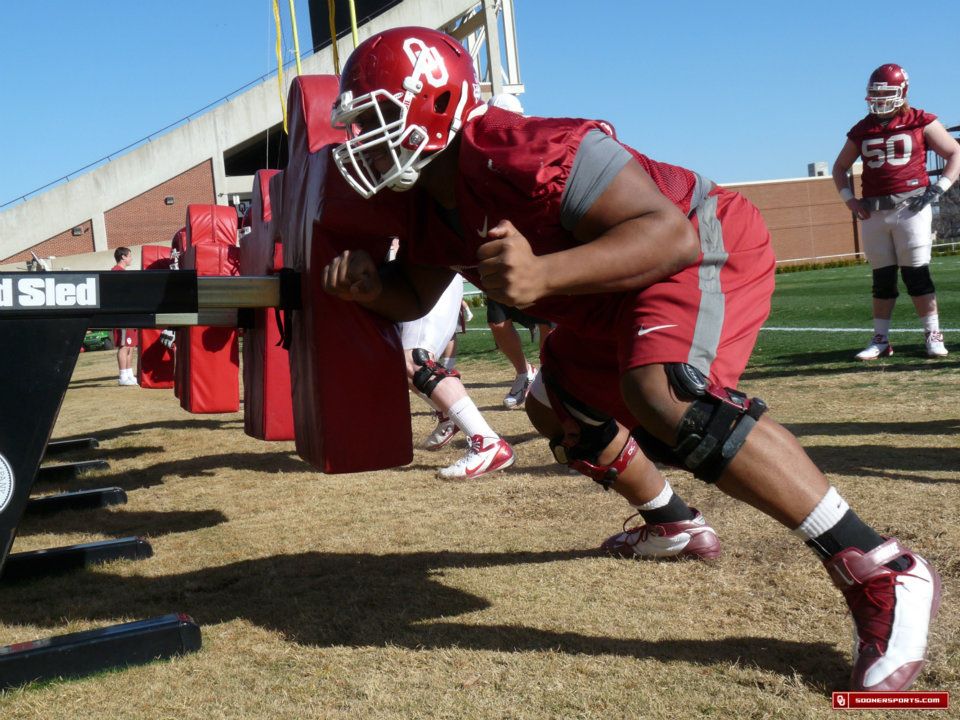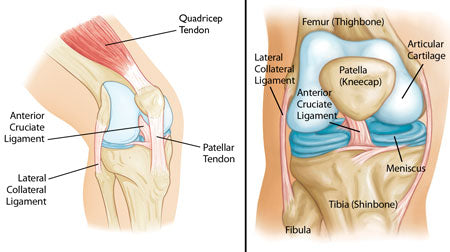Three Best ACL Knee Braces for Football

In the United States, football is the king of contact sports. Unfortunately, competing in this competitive sport can lead to football-related injuries. One of the more common football injury is a knee injury, especially torn ACLs. In order to protect yourself, it is important to understand how common injuries occur, how to prevent football injuries, and how to recover from them. By actively taking steps to protect yourself as you enter football season, you will be able to decrease chances of injury. Whether you are a weekend warrior, high school player or collegiate athlete, look up to the pros as players in the NFL also trust knee braces for protection. Learn about the different knee braces available and find the best football knee brace for your position and need.
Studies have shown that if a football player wears a knee brace for protective reasons it will significantly reduce knee injuries. Some people believe that wearing a brace might decrease their movement and performance on the field, however, with how advanced the technology of these braces has become, most players do not see any effect on their performance.
Football players may be interested in wearing a brace for two different reasons. The first is to prevent an injury from occurring in the first place. The second is after the injury has already occurred and the play is ready to get back out and play. The injured aspect of the knee may not be as strong as before so the knee brace is there to provide support. There is also the mental aspect of support when wearing a brace. Knowing that the support is there for you, allows you to play the game you love at ease.
Why do football players need braces?
There are a few reasons that football players are highly vulnerable to knee injuries. It is a very high contact sport so the chances of another players hitting the side of your knee with great force in high. The sport itself also involves a lot of sudden stopping and starting, pivoting and twisting. All these movements put the player at risk of a knee injury. So if you are comparing the pros and cons of wearing a knee brace during football then the fact that the brace can be worn with no effect on performance and help decrease the risk of injury is a great reason to take the extra step in protecting your body.
Common football injuries-- ACL/MCL Injury

The most common injuries to the knee are an ACL tear, MCL tear, and meniscus tear. The MCL is located on the inner side of the knee and works with the LCL to restrict unusual movement of the knee sideways. The ACL is located inside the knee and more forward then the PCL. The ACL and PCL form an X within the knee and their role is to restrict and control forward and backward movement.
There are many studies that show if your foot gets stuck while your body goes a different direction, believe it or not, you'll create much more force than if you're hit from contact explains Muñoz. Players injured by direct contact tend to get ligament injuries that are associated with fractures.
ACL injuries can occur from either direct contact to the knee usually a lateral blow to the knee. This is typically seen in football and includes associated injuries to the MCL and Meniscus. The ACL can also be torn during non-contact activities. The athlete usually reports running down the field quickly stopping, changing directions and feeling a pop.
The meniscus of the knee is also referred to as the cartilage on the knee. Tears in the meniscus often occur with twisting movements or deep squats. A hard blow and direct contact to the knee is another common way to injure the menisci. If you tear the meniscus then there is a chance of also injuring a ligament of the knee at the same time.
ONCE THE SWELLING AND PAIN ARE CONTROLLED
Work on range of motion (about a week after initial injury), which should be near normal except for extreme ranges. Athletes should then work on strengthening the injury, progressing from isometrics (no movement) to concentric (shortening) and eccentric (lengthening) movements.
With the right recovery program and bracing, athletes can return to their pre-injury state. "It's normal for the football player to be better the second year back." The first year back athletes are still strengthening the ACL, but the second year back it should have it's strength back.
An offensive lineman for a school at any level is in jeopardy of getting this valgus blow (a blow to the outside of the knee while the foot is planted). Without a high-quality knee brace to protect the knee it is probably a matter of time before such an injury occurs as the lineman receives a hit like this. The exposure time in practice has increased and this type of protection has even crossed over to the defensive linemen in most Division 1 programs.
Assuming it's a relatively isolated ACL injury, 95 percent of athletes can return to the same pre-injury level.
TREOLO BEGAN KNEE BRACING HIS LINEMEN IN 1999
After Treolo began bracing, the MCL injury was all but eliminated. There were few who had MCL/ACL injuries, and were less severe, making for a quicker recovery than before he began bracing his athletes.
I only had one linemen over the next 11 seasons get surgery from a practice or game related knee injury. "I use the Defiance made by DJO. This brace is commonly used following surgeries for ACL and MCL, but using it prophylactically for linemen is becoming part of today's uniform.
An injury to any of the ligaments in the knee mentioned above may require having to get surgery. This is why purchasing a high quality knee brace to try and prevent injury is a great idea.
How can a knee brace help?
These types of braces are specially designed to reduce the amount of force and strain that is being placed on the soft tissue of the knee, like the muscles, tendons, ligaments, and cartilage. If the brace contains a hinge then that hinge is designed to allow the knee joint to move through its natural range of motion but still restrict the knee when it is moving into a high risk position. If you are recovering from a previous injury then the brace should also contain some sort of leverage system that will decrease the amount on strain being placed on the ligament that was injured.
Here are some of the best knee braces for football:
HINGED LIGAMENT KNEE BRACE
Designed to provide stability and support following injury or reconstruction of the ACL/MCL/PCL/LCL, The knee brace features a lightweight sturdy frame lined with durable soft goods for the combination of optimum support and comfort. This is the perfect brace for those active patients needing additional support during recovery and sports.
Indications:
● Knee instability due to anterior and/or posterior cruciate ligament ( ACL/MCL/PCL/LCL injuries )
● To restrict the range of motion after reconstructive surgery
● Recommended for low to medium impact sports
DonJoy Armor Knee Brace

About the Product
Treat or prevent moderate to severe ACL instabilities, recovery from ACL reconstructions, and hyperextension prevention
Designed for athletes involved in extreme or contact sports, who don’t want to sacrifice speed
Many collegiate football teams require their linemen to wear this knee brace because it is so successful at preventing ACL injuries
Sleek, low-profile knee brace made with a strong aircraft-grade aluminum frame
Helps improve your natural gait by applying progressive resistance before reaching a firm end point during movement
Orthomen Functional ACL Knee Brace
About the Product
Knee instability due to anterior and/or posterior cruciate ligament ( ACL/PCL/LCL injuries )
To restrict the range of motion after reconstructive surgery
Recommended for low to medium impact sports
Hypoallergenic silicone-grip strap pads for anti-migration
Concentric condyle pads correspond to bilateral femoral condyles.
Numbered straps provide desirable counter force and adjust optimal size.
Designed to provide stability and support following injury or reconstruction of the ACL/PCL/LCL, The Functional ACL Knee Brace features a lightweight sturdy frame lined with durable soft goods for the combination of optimum support and comfort. This is the perfect brace for those active patients needing additional support during recovery.
Almost every move in football can lead to some sort of injury, from rushing and catching to tackling and throwing, be it from overuse or sudden impact. Injuries happen.
While there are many ongoing changes to the sport to prevent injuries, due to the impact and wear and tear on the body, young athletes can put themselves in harm's way if they don't take the necessary precautions to prevent such pain.
The key to injury prevention is to well prepare your body for the worst.
CONTACT INJURIES ARE A LITTLE DIFFERENT.
You can only prepare your body so much. But if someone tackles you and you fall hard, the wrong way, you can do some damage to your body. Having the right equipment and support is key to prevent such injuries.
Specifically speaking about the knee; training the knee to stay out of the "at risk" position is key. ACL tears occur when the knee is extended and rotated and if we can train our body's to stay in a bent knee position that will significantly reduce the risk of a ligament injury.
Football is a high-intensity, contact sport that has a high injury rate. Protect your body when you play. We have braces for football players to protect the most-injured joints, from knee, ankle, shoulder, elbow, wrist braces and more. Whether you are a football linemen, a receiver, safety or any other position, we have braces to protect you without impacting performance.
Related:
How To Choose One Best Type Of Knee Brace For Your Knee Pain?
- Choosing a selection results in a full page refresh.

36 comments
T.R. Lord
My 18 year old Senior football player has a radial tear in his left meniscus and he was adamant that he wants to play his final HS year. His doctor prescribed the Playmaker and he is back on the field, pain level 1- 2(minor discomfort) without pain mess. Well worth the money for Orthomen functional ACL knee brace. Surgery will come after the season is done.